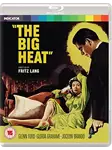THE BIG HEAT
“The Big Heat” is a classic film noir crime thriller from 1953, directed by the legendary Fritz Lang. The film follows a tough cop named Dave Bannion, played by Glenn Ford, who sets out to seek revenge after his wife is killed by a car bomb intended for him. As he delves deeper into the case, he discovers a web of corruption that involves the city’s most powerful figures, including the police force itself. Along the way, he teams up with a gangster’s moll named Debby Marsh, played by Gloria Grahame, who helps him navigate the dangerous underworld of organized crime. With its hard-boiled dialogue, intense action sequences, and dark, moody atmosphere, “The Big Heat” is widely regarded as one of Lang’s greatest achievements and a cornerstone of the film noir genre.
PLOT
“The Big Heat” is a classic film noir that follows the story of Sergeant Dave Bannion (played by Glenn Ford), a dedicated police officer in a corrupt and violent city. The film opens with Bannion investigating the apparent suicide of fellow officer Tom Duncan. Bannion quickly discovers that Duncan’s death was not a suicide, but rather a murder, and that he was killed because he was getting too close to a local crime syndicate.
Determined to bring the criminals to justice, Bannion begins to investigate further, despite warnings from his superiors to back off. As he delves deeper into the corruption, Bannion’s wife is killed in a car bomb meant for him. Driven by grief and a desire for vengeance, Bannion becomes even more determined to take down the criminals responsible.
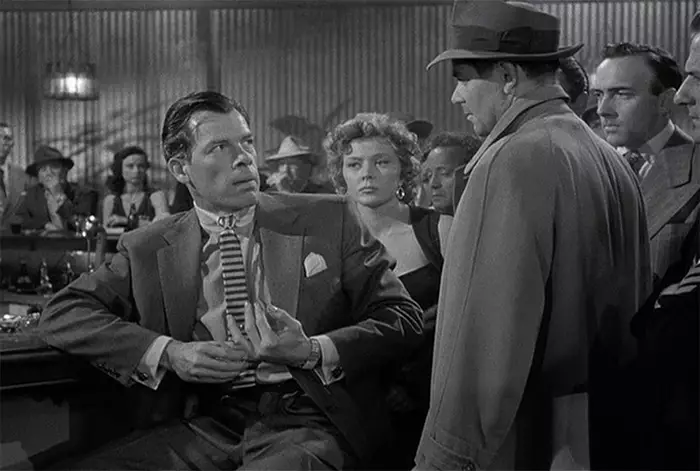
Bannion’s investigation leads him to Mike Lagana (played by Alexander Scourby), the local crime boss who controls everything from prostitution to gambling to drugs. Lagana is aided by his right-hand man, Vince Stone (played by Lee Marvin), a sadistic and violent thug who is not afraid to use any means necessary to protect his boss’s interests.
As Bannion gets closer to the truth, he becomes the target of numerous assassination attempts. His determination and courage are only matched by the cruelty and brutality of Stone, who is responsible for some of the most shocking and violent scenes in the film.
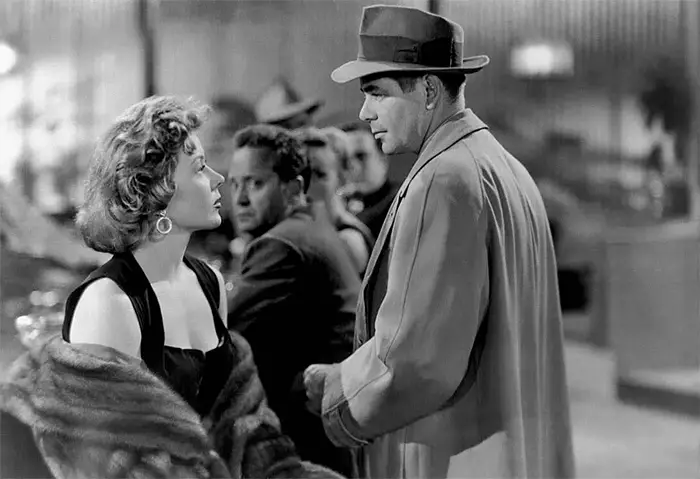
Bannion also meets Debby Marsh (played by Gloria Grahame), a beautiful but cynical woman who is initially suspected of being involved with the criminals. However, as the two begin to work together, Bannion realizes that Debby is not all she seems. Her loyalty and courage ultimately prove to be instrumental in bringing down the criminals.
Throughout the film, Bannion is driven by a strong sense of justice and a desire to avenge his wife’s death. However, as he delves deeper into the corruption, he begins to question whether justice is even possible in a system that is fundamentally flawed. This raises important questions about the nature of justice and the ability of individuals to effect change in a corrupt system.
In the film’s climactic scene, Bannion confronts Lagana and Stone in a final showdown. In a tense and violent confrontation, Bannion is able to take down Stone and ultimately kills Lagana. However, the film does not provide a neat and tidy resolution to the corruption and violence that pervades the world of “The Big Heat”. Instead, it leaves the audience with a sense of cynicism and hopelessness, suggesting that the world of the film is fundamentally flawed and corrupt.
THEMES
“The Big Heat” is a classic film noir that explores a number of complex and interconnected themes. From corruption and power to morality and justice, the film presents a searing critique of American society in the post-war era. In this review, I will break down some of the most important themes in the film and examine how they are explored through the characters and plot.
Corruption and Power
One of the most prominent themes in “The Big Heat” is the pervasiveness of corruption and power in American society. From the police force to local government to organized crime, the film depicts a world in which everyone is on the take. Even Bannion’s fellow police officers are implicated in the corruption, with many of them taking bribes from the criminal underworld. This pervasive corruption creates a sense of cynicism and hopelessness that is palpable throughout the film.
At the center of this web of corruption is Mike Lagana, the local crime boss who controls everything from prostitution to gambling to drugs. Lagana uses his power and influence to control the police force and ensure that his criminal enterprise remains untouched. In this way, he represents the ultimate manifestation of corruption and power, a figure who is above the law and immune to justice.
Morality and Justice
Against this backdrop of corruption and power, the film raises important questions about morality and justice. Bannion, as the film’s hero, is driven by a strong sense of justice and a desire to avenge his wife’s death. However, as he delves deeper into the corruption, he begins to question whether justice is even possible in a system that is fundamentally flawed. This raises important questions about the nature of justice and the ability of individuals to effect change in a corrupt system.
Similarly, the character of Debby Marsh raises important questions about personal morality. Initially presented as a cynical and manipulative woman, she ultimately proves to be a loyal and courageous ally to Bannion. Her transformation highlights the idea that individuals have the power to choose their own morality, even in the face of overwhelming corruption and cynicism.
Violence and Brutality
“The Big Heat” is also notable for its intense and brutal violence, which was shocking for its time. The film features a number of violent scenes, including the infamous moment when Stone throws a pot of hot coffee into Debby’s face, scarring her for life. This scene is not only shocking but also serves to highlight the extreme brutality and callousness of the film’s villains.
At the same time, the film also presents violence as a necessary tool in the fight against corruption. Bannion, for example, is not afraid to use violence to achieve his goals, and his willingness to do whatever it takes underscores the film’s message that sometimes violence is necessary in the pursuit of justice.
Gender and Power
Finally, “The Big Heat” also explores the complex relationship between gender and power. The film features a number of strong female characters, including Debby Marsh and Bannion’s wife, who are portrayed as intelligent and independent women. However, these women are also victims of the corruption and violence that pervades the film’s world. Debby, in particular, is the victim of violence and abuse at the hands of Stone, highlighting the ways in which gender and power are intimately connected.
RECEPTION
 “The Big Heat” was released to critical acclaim and commercial success. The film was praised for its intense violence, complex characters, and sharp social commentary, which were all hallmarks of the film noir genre.
“The Big Heat” was released to critical acclaim and commercial success. The film was praised for its intense violence, complex characters, and sharp social commentary, which were all hallmarks of the film noir genre.
Critics lauded the film’s direction, particularly the work of director Fritz Lang, who was known for his mastery of the film noir style. Lang’s use of shadow and light, as well as his ability to create a sense of tension and suspense, were noted as key strengths of the film.
The performances of the cast were also widely praised, particularly that of Glenn Ford as Sergeant Dave Bannion. Ford’s portrayal of Bannion, a man driven by a desire for justice and revenge, was seen as a standout performance, with critics praising his intensity and emotional depth.
Lee Marvin’s portrayal of Vince Stone, the film’s brutal and sadistic villain, was also widely praised, with critics noting his ability to create a sense of fear and unease in the audience.
The film’s themes of corruption, violence, and social decay were also seen as timely and relevant to the post-war era in which the film was released. Critics noted that the film provided a searing critique of American society, particularly the police force and the criminal underworld.
Commercially, the film was a success, grossing over $3 million at the box office and solidifying the careers of both Fritz Lang and Glenn Ford. It also went on to become a cult classic and a defining film of the film noir genre.
FRITZ LANG
“The Big Heat” is often considered one of the best films in the filmography of its director, Fritz Lang. Lang was a prolific filmmaker in both his native Germany and in Hollywood, known for his work in a range of genres, including science fiction, melodrama, and film noir.
Lang’s approach to directing was highly meticulous and methodical, with a focus on creating a visually stunning film that also contained a strong narrative. His use of shadow and light, as well as his signature camera angles and movements, were key elements of his style, and helped to create the intense atmosphere and tension that is a hallmark of film noir.

In “The Big Heat,” Lang’s direction is particularly strong, with his use of stark, high-contrast lighting and bold camera angles helping to create a sense of dread and unease throughout the film. He also effectively utilizes close-ups to capture the emotional intensity of the characters, particularly in the scenes involving Gloria Grahame’s character, Debby Marsh.
Lang’s ability to tackle complex and often controversial themes was also on full display in “The Big Heat.” The film’s critique of police corruption and organized crime was seen as highly daring and socially relevant, particularly in the post-war era in which it was released.
Lang’s own experiences as a German Jew who fled Nazi persecution in the 1930s undoubtedly influenced his worldview and his approach to filmmaking. His films often explored themes of violence, power, and corruption, and he had a keen eye for the ways in which these issues intersected with larger social and political forces.
In “The Big Heat,” Lang’s approach to these themes is particularly effective, with his depiction of police brutality and corruption serving as a powerful critique of the post-war American society. The film’s violence, which is often shockingly graphic, was seen as a reflection of the broader social decay and moral corruption that many believed were plaguing the country at the time.
At the same time, Lang’s portrayal of the film’s female characters, particularly Debby Marsh and Lucy Chapman, was seen as particularly nuanced and complex. Lang refused to reduce these characters to mere plot devices, and instead imbued them with a depth and complexity that was unusual for the time. His decision to have Debby ultimately side with Bannion, rather than with her criminal lover, was seen as particularly daring and feminist.
Overall, Lang’s work on “The Big Heat” helped to solidify his reputation as one of the most skilled and innovative filmmakers of his time. His ability to tackle complex themes and create visually stunning films that also contained strong narratives made him a favorite of audiences and critics alike, and ensured that his work would continue to be celebrated and analyzed for decades to come.
POPULAR CULTURE
One of the most notable examples of “The Big Heat’s” influence can be seen in the work of director Quentin Tarantino. Tarantino has frequently cited “The Big Heat” as one of his favorite films, and has paid homage to it in several of his own films, including “Reservoir Dogs” and “Pulp Fiction.”
In “Reservoir Dogs,” Tarantino directly references a scene from “The Big Heat” in which a character is tortured and disfigured with scalding coffee. Tarantino also incorporates elements of the film’s depiction of police corruption and violence into his own work, and has said that “The Big Heat” was a major influence on his approach to filmmaking.
The film has also been referenced and paid homage to in several other works of popular culture, including the television show “The Sopranos.” In one episode, a character is shown watching “The Big Heat” on television, and the film’s themes of violence and corruption are referenced throughout the series.
“The Big Heat” has also had a significant impact on the broader cultural consciousness, with its depiction of police corruption and moral decay resonating with audiences long after its release. Its portrayal of the police as flawed and corrupt, rather than as straightforward heroes, was groundbreaking for its time, and helped to usher in a new era of more complex and nuanced depictions of law enforcement in American cinema.
Explore more Film Noir
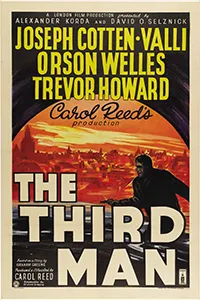
Classic film noir set in post-WWII Vienna, where a writer investigates the mysterious death of his friend.
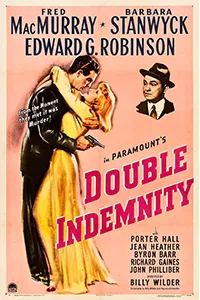
A gripping film noir about a seductive woman who convinces an insurance salesman to plot a murder.

This classic film noir follows private detective Philip Marlowe as he investigates a complex case involving a wealthy family.
